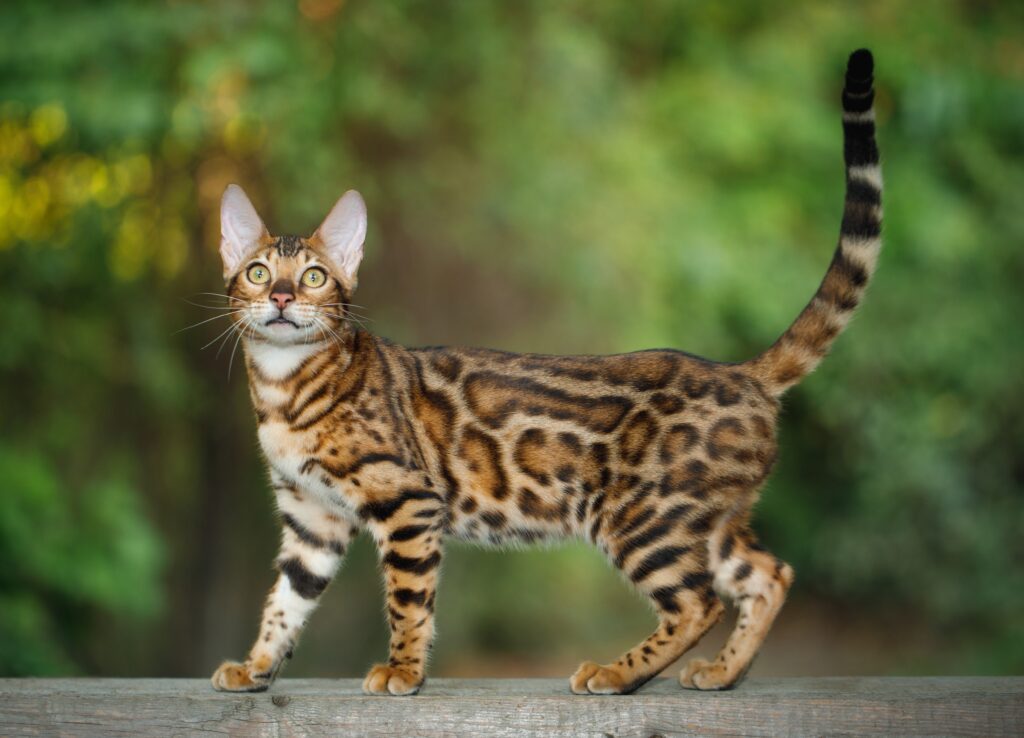The Bengal is a short-haired breed of cat with a strikingly wild look and a beautiful shimmering gold marbled or spotted coat. They are an extremely well-balanced cat, with a truly athletic build. Long and lean, with slender legs and neat paws, they are made for agility and speed.
The Bengal’s thick coat is its most striking feature with a mesmerising golden shimmer, born out of it leopard cat ancestry. It also has varied and unique markings and colours, making this cat extremely appealing. The most popular coat variation is the brown spotted/rosetted coat, but they can also be seen in red, brown, black, ticked, grey and be spotted, rosetted and clouded.

Description and Characteristics
Bengals are extremely active and curious cats which need lots of stimulation to keep them entertained. Anyone considering owning a Bengal needs to recognise that environmental enrichment and time spent playing with the Bengal are vital. Without this, the Bengal will find its own ways to amuse itself which can potentially be destructive for the owner and unsafe for the cat. This is most defeintiely not a lap cat, although they will thrive on your attention. In some respects, they are quite dog-like in their desire to be around their human companions. Bengals don’t tend to be noisy cats, but if they have a demand they will let their owner know with a loud and harsh cry. The Bengal is a relatively new cat breed, developed by Jean Mill of California, USA who crossed an Asian Leopard Cat, a small wild cat from South West Asia, with a domestic cat, with the objective of producing a pet cat with a sweet nature and resembling miniature leopard. The ‘F number’ referred to with Bengal cats indicates how many generations the kittens are away from the first cross. In the UK, the first cross, so an F1, requires a Dangerous Wild Animal Licence.
Health and common issues
Bengal Cats are generally healthy cats. However, they can still be prone to certain health conditions including pyruvate kinase (PK) deficiency, progressive retinal atrophy (PRA) and flat chested kitten syndrome. They may also be slightly more prone to hip dysplasia and hypertrophic cardiomyopathy than some other breeds.






